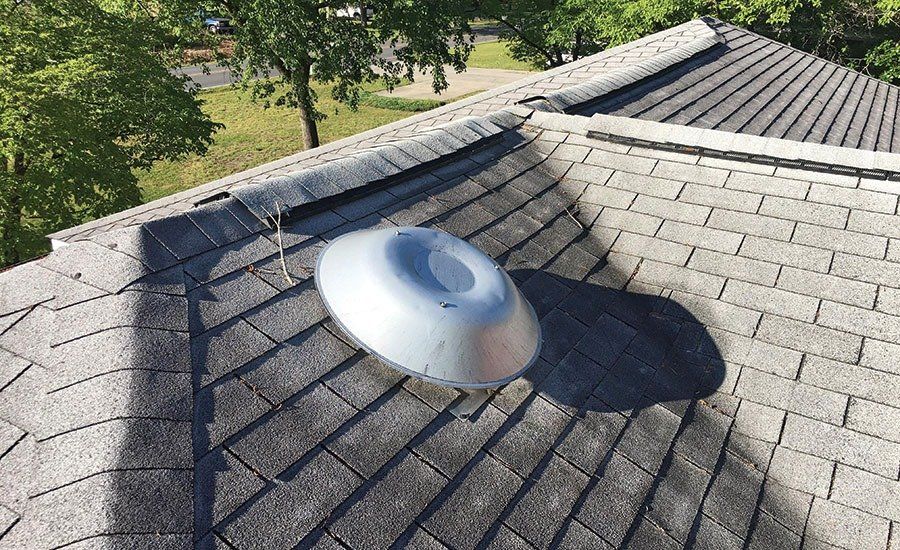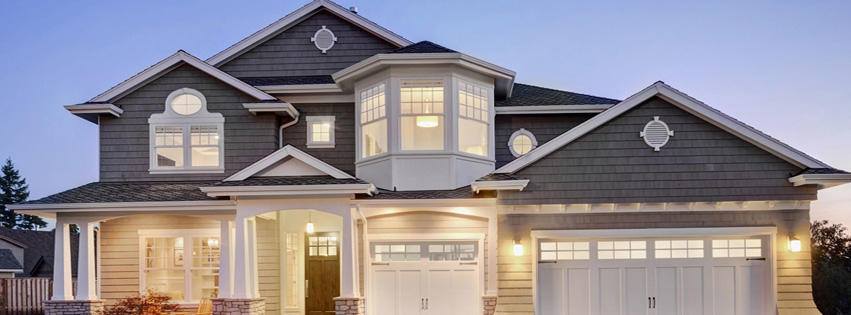Blog Layout
What Good are Attic Exhaust Vents

No good without proper intake vents
No good without proper intake vents
When attic ventilation gets the attention of the residential roofing contractor, it’s most often the exhaust vents in the spotlight.
This is understandable because the goal of the attic exhaust vents is to get any heat and moisture buildup out of the attic (that is, “exhaust”). That’s exactly what ridge vents, wind turbines, gable louvers, box vents/roof louvers and power fans — the five categories of exhaust vents on the market — are designed to do. That’s why they are an obvious point of focus by the contractor.
But here’s the reality.
Exhaust vents without the proper amount of intake ventilation at the soffit/eaves or low on the roof are useless and potentially problematic. The best practices in residential attic ventilation tackle intake ventilation when installing attic exhaust vents.
Balanced System
Roofing contractors who have taken the time to understand airflow dynamics realize that to remove hot air and moisture from an attic there must be incoming cooler, dryer air into the attic.
Absolutely, we install intake vents, You can’t have proper exhaust without proper intake.
Together, intake and exhaust vents form a balanced attic ventilation system that also helps to fight ice dams in snow climates by keeping the roof deck temperature even so the snow and ice can melt evenly.
Contractors should install intake vents with exhaust vents as a regular course of action, or at least ensure the intake ventilation in place is enough to satisfy the needs of the exhaust vents.
For many roofing contractors, the one-two combination of intake and exhaust has become automatic and second nature. The two just go together.
Attic ventilation is a two-step process.
Proper air exchange inside the attic needs both steps to function properly.
We will not install exhaust vents unless the intake vents are installed along with them.
We do it specifically this way because they work together as a system, and exhaust is ineffective without supporting help from the intake.
Why Stop Halfway?
Many of the roofing contractors insist on intake ventilation as part of the project when installing exhaust vents because anything less is not finishing the project for the homeowner:
Sometimes the homeowner balks, but roofing contractors should persist with their explanation.
We let them know that if they do not opt for the intake vents it will very likely affect their shingle manufacturer’s warranty in the future.
Useless and Problematic
Not only are exhaust vents unable to properly remove heat and moisture from the attic without the needed flow of air from intake vents, they can become problematic, and problems often lead to callbacks.
If a non-motorized exhaust vent (ridge vents, wind turbines, roof louvers and gable louvers) is starving for intake airflow it can actually pull air from itself (in testing we’ve seen a ridge vent ingest air from its back side) or from a nearby exhaust vent (a wind turbine or box vent will gladly take air from anywhere, including the wind turbine a few feet down the roofline if intake air from the soffit is not happening). If an exhaust vent is suddenly ingesting air, it could also suddenly be ingesting anything the air is carrying along for the ride: rain, debris, dust, and snow, all entering the attic. That’s not what exhaust vents should be doing.
Motorized exhaust vents (roof-mount and gable-mount power fans) that are lacking the needed intake air can experience premature motor burnout and pull air from the conditioned living space. Neither one of those situations is desirable.
Installation Instructions, Warranty and Code
Never mind that the installation instructions written by the exhaust vent manufacturer clearly state the need for proper intake ventilation, what does the shingle manufacturer’s warranty say?
The full terms of the shingle warranty are tied to proper attic ventilation. The Asphalt Roofing Manufacturers Association, the official representing organization of shingle manufacturers, said the attic ventilation system must be balanced with intake and exhaust vents.
Finally, the International Residential Building Code says to follow the attic ventilation manufacturer’s installation guidelines. It almost must be intentional to overlook the specified, explained need for intake ventilation.
And if the homeowner isn’t too concerned about their shingle warranty?
“If after explaining the need for intake ventilation in order to meet code and the shingle manufacturer’s warranty requirements the homeowner is unwilling to have intake vents installed, we insist the homeowner signs off on the project.
Always on the Lookout
Sometimes the roof already has enough intake ventilation and only needs a boost with the exhaust.
Most of the time we do not need to do anything but we always check.
You’re not just installing new shingles and exhaust vents. You’re installing a total roof system
“Doing the intake vents with the exhaust vents is definitely helping the customer update the home and reduce home maintenance.
New Title
No Nigo without proper intake vents
Speak with a Professional
(732) 566-0944


